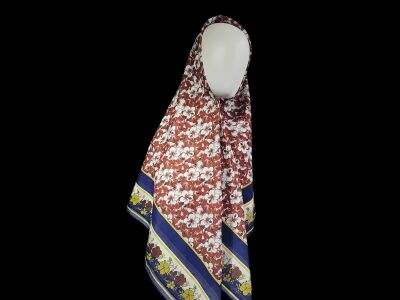O hijab é um tipo específico de lenço que muitas mulheres muçulmanas usam para cobrir os cabelos e o pescoço. Fun Color Textile essa peça de roupa tem uma grande importância em muitas culturas muçulmanas. Tanto a política quanto os sentimentos religiosos são a razão pelas quais as mulheres usam hijab como identidade religiosa e cultural. Nem todos os hijabs são iguais; existem muitas variedades diferentes e cores.
Diferentes tecidos de hijab para várias ocasiões
Existem muitos tipos de tecidos com os quais o hijab pode ser fabricado. Cada tipo de tecido tem suas próprias vantagens com base nas estações e ocasiões. Estes são alguns dos tecidos mais comuns usados na fabricação de hijabs:
1 Algodão: O tipo mais comum de tecido usado para hijabs do dia a dia. Como é muito leve, envolve bem e é confortável de usar. Por que o algodão te ajuda no clima quente? Porque o algodão é um material arejado, ele permite e ajuda você a se refrescar. O Fabrico usado em hijabs de algodão vem em diferentes espessuras, o que significa que você pode escolher o nível de modéstia que deseja. Eles também são extremamente fáceis de cuidar e podem ser lavados na máquina, tornando-os perfeitos para uso diário.
Seda: Os lenços de cabeça de seda são luxuosos e ideais para ocasiões formais. Eles têm uma aparência deslumbrante com sua superfície brilhante e se ajustam perfeitamente, o que os torna adequados para vestidos de ocasião, como vestidos de noiva e festa. No entanto, os lenços de seda podem ser muito delicados, exigindo cuidados especiais para evitar danos caso não sejam manipulados corretamente. Para manter a beleza dos lenços de seda, é crucial aprender como lavá-los e armazená-los adequadamente.
Chiffon: Outro material leve, mas um pouco transparente, apropriado para lenços usados em climas moderados. Embora não respire tão bem quanto o algodão, ele é confortável o suficiente para ser usado. Devido à ampla variedade de estampas e padrões, os lenços de chiffon são adequados tanto para ocasiões formais quanto informais. Assim como qualquer tema, você pode ter os lenços de chiffon ideais combinados com seu visual, seja para uma festa ou apenas um dia na escola.
Malha: Um tecido com elasticidade que envolve firmemente a cabeça. É comumente usado para lenços islâmicos esportivos ou para manter seu lenço no lugar durante atividades físicas. Lenços de malha vêm em diferentes cores e estampas, sendo bons tanto para ocasiões especiais quanto para uso diário. Se você precisa de uma opção confortável, estes tênis são ótimos para você.
Escolhendo um Tecido Adequado de Hijab Para Você
As dicas abaixo devem ajudá-lo a escolher o melhor tecido de hijab que funcione para você:
Seu Tipo de Corpo: A primeira coisa que você deve considerar ao escolher um tecido de hijab é o seu tipo de corpo. Um tecido que realce suas curvas e destaque os melhores atributos. Para aquelas que têm um corpo médio, tecidos leves Tecidos Preparados para Impressão como chiffon ou seda podem parecer bonitos. Tecidos mais grossos, como algodão ou lã, são ótimos especialmente se você tem um formato corporal maior, pois permitem que você cubra mais enquanto continua com uma aparência elegante.
Regra de Ouro #3: A cor da sua pele também deve decidir a cor do tecido do seu hijab. Se você tem tons quentes, cores terrosas como vinho, oliva ou mostarda podem lhe cair bem. Azul, rosa ou lavanda podem ser mais favorecedores se você tiver um tom de pele frio. Uma cor que combina com sua pele não apenas valorizará seu estilo de hijab, mas também aumentará sua confiança ao usá-lo.
Estilo Pessoal: Seu hijab deve ser uma extensão do seu estilo pessoal e senso de moda. Se você gosta de cores vibrantes e chamativas, deve escolher tecidos com estampas divertidas e cores brilhantes. Se seus gostos são mais discretos e neutros, você pode querer procurar um tecido em tons terrosos ou com designs simples. Um bom hijab complementa seu visual, proporcionando mais confiança.
Cuide dos Tecidos do Seu Hijab
É essencial tratar o tecido do seu hijab corretamente se você quiser mantê-lo com bom aspecto ao longo do tempo. A seguir, estão dicas simples para cuidar do tecido do seu hijab de acordo com o tipo:
Algodão: Lave seus hijabs de algodão Lã Pêssego Chiffon em água fria e depois pendure-os para secar. Nota: Nunca use cloro nem amaciante de tecidos nos tecidos, pois isso pode causar danos. Se seus hijabs de algodão precisarem ser passados a ferro, passe em temperatura baixa para evitar queimaduras.
Seda: Recomenda-se lavagem a seco para manchas de seda, além disso podem ser lavadas à mão em água muito suave e fria. Não aperte, esprema ou torça o material, pois ele pode ficar deformado. Para hijabs de seda, pendure para secar e nunca os exponha à luz solar direta, pois isso também pode causar desbotamento.
Chiffon: Hijabs de chiffon são melhores lavados em água fria no ciclo delicado e depois pendurados para secar. Não use cloro nem amaciante de tecidos, pois eles podem danificar a peça, assim como ocorre com o algodão. Nunca use muito calor ao passar a ferro em hijabs de chiffon, pois eles podem queimar.

 PT
PT






































